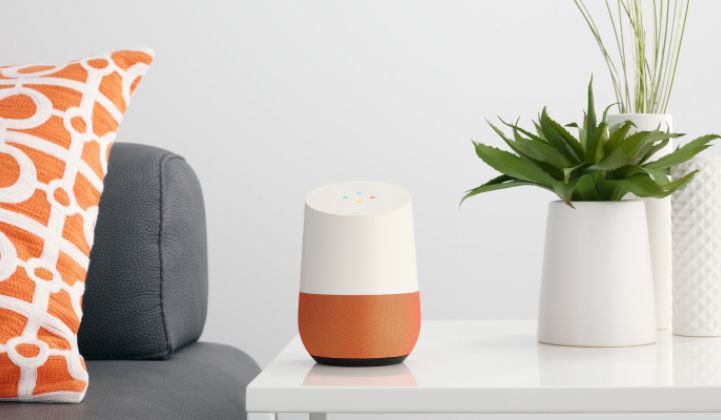Google debuted its new connected home device on Tuesday -- aptly called Google Home -- to compete directly with Amazon’s voice-activated speaker Alexa. Google also unveiled another key piece of its connected home strategy, a mesh router simply named Google Wi-Fi.
The two pieces of hardware will be the cornerstone of Google’s push into home controls. So where does that leave Nest? If recent activity (or lack thereof) is any indication, Nest will be just another piece of hardware in the ecosystem.
There was a time when it seemed as though Nest was going to be central to Google’s approach to the connected home. In 2013, Nest suggested the device would act as a connected home hub, and its Works With Nest developer program would have an ecosystem of products that would respond based on the status of the thermostat.
The vision is still there. Nest does have a robust developer program, with more than 10,000 developer partners integrating products and services on the platform including Rachio, Lutron, Xfinity Home, Whirlpool and Stringify.
But Google Home’s website suggests the vision is no longer one owned by Nest within Alphabet: "Google Home connects seamlessly with smart devices like Chromecast, Nest and Philips Hue, so you can use your voice to set the perfect temperature or turn down the lights," reads the site.
In the near term, it is certainly not an either-or proposition. Nest can continue to have a developer network for those who choose to integrate products through the thermostat, and Google will add to its own network of devices supported by Google Home.
For example, both Nest and Google Home work with the popular automation software IFTTT, as does Amazon Alexa. Nest also works with Alexa. Makers of individual devices do not want to box themselves into a corner at this early stage in the growing market, so most integrate with different platforms.
“Essentially it’s a wide variety of ecosystems,” said Honeywell Connected Home design director Ted Booth. His company is integrating its Wi-Fi thermostats with connected home platforms since customers are still experimenting with lots of different software to control devices in the home.
However, with Google and Amazon competing directly via voice-activated speakers, there is vast potential for a push toward these two platforms in coming years. (Apple will need to step up its game beyond HomeKit.) Since many people already interact daily with Amazon, Google and Apple, there's tremendous pull toward those companies.
For key products, integration will be essential. Earlier this year, Amazon Alexa Fund made its largest investment to date in smart thermostat company ecobee, which will create a tighter integration between ecobee and Alexa.
Few people will buy Alexa or Google Home thinking about a fully connected home, and it's even less likely that they'll be thinking about upfront energy savings. They’ll buy it so they can play music, or ask it for weather forecasts, or control disparate devices.
Early adopters of Nest bought the thermostat because it was the best looking one they’d ever seen -- and it could be controlled from their phone. People did not buy it hoping it would someday open their garage door. Nor were they looking for a deeper relationship with their utility. But that's what many eventually got.
When Nest founder Tony Fadell left the company in June, he said in a statement the company had grown into much more than a thermostat company. “We’ve created a hardware + software + services ecosystem,” he wrote in a blog post, “which is still in the early growth stage and will continue to evolve to move further into the mainstream over the coming years.”
What that means for Nest is still unclear. For now, it might mean tighter integration with Google Home, rather than being an ecosystem unto itself.



